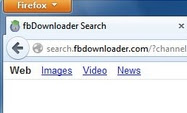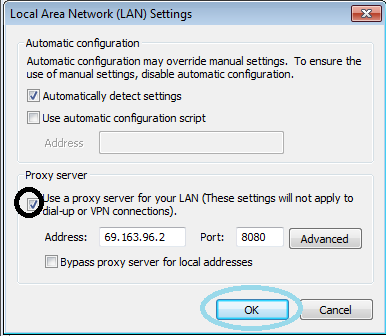FbDownloader tritt für eine Anwendung ein, die ein Websuchwerkzeug (search.fbdownloader.com) und ein Gerät von Facebook vertritt, die durch andere freie Anwendungen zusammen verteilt werden. Nach der erfolgreichen Installation auf das System werden sie Ihre bevorzugte Browser-Startseite entführen, Ihren Suchmotor ersetzen, der standardmäßig gesetzt wurde und senden Sie sogar bestimmte Mitteilungen auf Ihrer Wand von Facebook ab. Außerdem wird dieses Werkzeug Anzeigen und gesponserte Verbindungen zu Ihren Suchergebnissen zeigen, und könnte sogar Suchbegriffe von Ihren Suchabfragen sammeln.

FbDownloader geht in Ihren Arbeitsplatz ein, nachdem Sie eine andere freie Anwendung oder Erweiterung installiert haben, die diesen Browser-Luftpiraten mit seinem Monteur stopfen ließ. Ebenso ein Beispiel, wenn Sie vShare installieren, werden Sie FbDownloader zusätzlich installieren, Ihre Browser-Startseite veranlassen, sich http://search.fbdownloader.com/and zu bessern, Ihr Verzug suchen Motor zu http://search.fbdownloader.com. Zur gleichen Zeit, wenn Sie vShare von Ihrem System deinstallieren, werden die Standardeinstellungen Ihres WWW-Browsers nicht wieder eingesetzt. Das bedeutet, dass Sie FbDownloader von Ihrem bevorzugten WWW-Browser manuell werden loswerden müssen.
Sie sollten immer Aufmerksamkeit schenken, während Sie Anwendungen installieren. In der Mehrheit der Fälle kann ein Softwaremonteur einige fakultative Monteure wie dieser besondere Browser-Luftpirat einschließen, der Ursachen über serach.fbdownloader.com umadressiert. Seien Sie sehr wachsam, was Sie schließlich bereit sind zu installieren. Wählen Sie immer die Auswahl der kundenspezifischen Installation und das ganze Zeug unüberprüfend, das von Ihnen, besonders fakultative Anwendungen nicht gewollt wird, die Sie nie haben herunterladen und in Ihr System bringen wollen. Unnötig, um zu erwähnen, sollten Sie nicht Anwendung installieren, der Sie nicht vertrauen.
Browser redirection removal milestones:
- Check the Local Area Network (LAN) settings of your system
- Check whether DNS settings have been changed by Redirect Virus
- Check your Windows HOSTS file contents
- Check Internet Explorer add-ons. Get rid of unknown or suspicious add-ons contained there
- Use Kaspersky TDSSKiller (TDSS Killer) application to get rid of malware belonging to the clan of Rootkit.Win32.TDSS
- Scan your system with decent anti-virus program and malware killer
- Consider using CCleaner to delete unwanted system/temp files and browser cache
- The last but not the least, reset your Router back to the factory default settings
- Check the Local Area Network (LAN) settings of your system a) Open Internet Explorer. In Internet Explorer go to: Tools->Internet Options.
- Check whether DNS settings have been changed by Redirect Virus: a) Open Control Panel (Start->Control Panel). b) Double-click “Network Connections” icon to open it. c) Right-click on “Local Area Connection” icon and select “Properties”. d) Select “Internet Protocol (TCP/IP)” and click “Properties” button. e) Choose “Obtain DNS server address automatically” and click OK.
- Check your Windows HOSTS file contents a) Go to: C:\WINDOWS\system32\drivers\etc. b) Double-click “hosts” file to open it. Choose to open with Notepad. c) The “hosts” file should look the same as in the image below. There should be only one line: 127.0.0.1 localhost in Windows XP and 127.0.0.1 localhost ::1 in Windows Vista. If there are more, then remove them and save changes. Read more about Windows Hosts file here: http://support.microsoft.com/kb/972034
- Check Internet Explorer add-ons. Get rid of unknown or suspicious add-ons contained there a) Open Internet Explorer. In Internet Explorer go to: Tools->Manage Add-ons. b) Uninstall unknown or suspicious Toolbars or Search Providers.
- Use Kaspersky TDSSKiller (TDSS Killer) application to get rid of malware belonging to the clan of Rootkit.Win32.TDSS a) Download the file TDSSKiller.zip and extract it into a folder b) Execute the file TDSSKiller.exe. c) Wait for the scan and disinfection process to be over. Close all programs and press “Y” key to restart your computer.
- Scan your system with decent anti-virus program and malware killer
- Consider using CCleaner to delete unwanted system/temp files and browser cache CCleaner is a freeware system optimization. It’s not a malware removal tool. However, it’s always a good idea to get rid of unnecessary internet/system files or corrupter Windows registry values that may cause various problems to your computer. Download CCleaner free application.
- The last but not the least, reset your Router back to the factory default settings
Windows XP Example:
Windows Vista / Windows 7 Example:
b) Click on “Connections” tab, then click “LAN settings” button. c) Uncheck (untick) the checkbox under “Proxy server” option and hit OK.More detailed TDSSKiller tutorial: http://support.kaspersky.com/viruses/solutions?qid=208280684
Keep in mind that this step is optional and should be completed only if you have followed all the above recommendations and you still have the redirect virus on your computer. First of all, please follow this guide: How to Reset a Router Back to the Factory Default Settings. Then you should flush DNS cache: a)Go to Start->Run (or WinKey+R) and type in "cmd" without quotation marks.
b) In a new window please type "ipconfig /flushdns" without quotation marks and press Enter.Please do not hesitate to contact us at any time if you require any help on our part of if you experience any difficulties. We hope that this information has been helpful to you and remain
Yours faithfully,Virus Removal Videos Blog















No comments:
Post a Comment